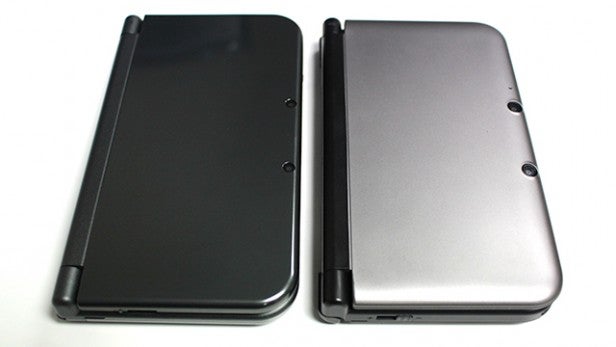New 3DS XL vs 3DS XL – Should you upgrade?
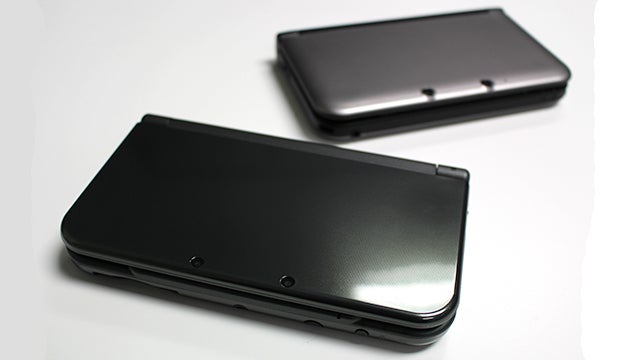
Should you upgrade to the New 3DS XL?
The New Nintendo 3DS hits UK shores today, and is available in two sizes – the standard model and the New Nintendo 3DS XL variant. Seeing as most existing 3DS owners have the original XL, it’s a fair question to ask if it’s really worth upgrading to this shiny new offering, or are you better off with the console you already own?
We’re here to help you answer that thorny question by guiding you through each aspect of the two systems, and by the end you’ll hopefully be better equipped to make that vital decision.
The New Nintendo 3DS and the New Nintendo 3DS XL were both released in the UK on February 13th.
New Nintendo 3DS XL vs 3DS XL – Price
New Nintendo 3DS XL – £168 / $199
Original Nintendo 3DS XL – £160
The New Nintendo 3DS XL may boast a large list of improvements over the standard XL, but at the time of writing it’s being sold for the exact same price as the original XL model.
While the XL has held its value better than the original 2011 machine, it’s still possible to pick it up at a discount – and with the New Nintendo 3DS hitting the shelves you can expect the older version to drop in price during this year.
Whether or not you consider a drop in specifications to be worth a slight saving is entirely up to you, but if you’re shopping on a budget then you could find that the older XL comes tumbling down in price in 2015.
See also: New 3DS vs 3DS

New Nintendo 3DS XL vs 3DS XL – Design
While the 2011 model 3DS and standard New Nintendo 3DS model look very different from one another – the more recent variant offering removable cover plates – the larger XL siblings have a little more in common from a purely aesthetic perspective.
The rounded design remains, although the New Nintendo 3DS XL has a very glossy outer case, which picks up fingermarks and smudges with alarming regularity.
Another big change is that it’s not possible to remove media cards without the aid of a screwdriver. On the older XL, the SD card was accessible behind a flap, but on this newer model the smaller, Micro SD card is now secured beneath the back plate, which is held in place by two screws.
See also: Nintendo 2DS vs 3DS vs 3DS XL
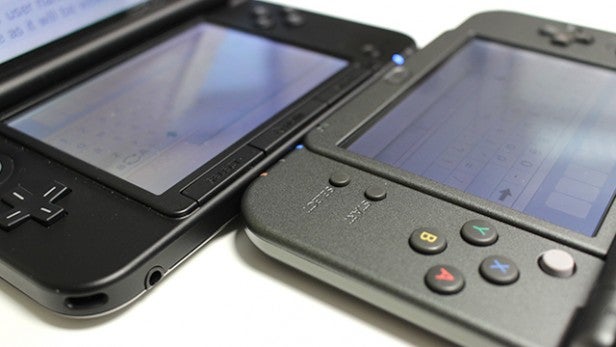
New Nintendo 3DS XL vs 3DS XL – C-Stick
Practically since the day the original 3DS hit stores shelves fans have been crying out for a second analogue stick, and previously the only way to get this was to invest in the Circle Pad Pro accessory – a bolt-on device which added a second Circle Pad at the cost of increasing the console’s bulk dramatically. Thankfully, the New Nintendo 3DS XL removes the need for this cumbersome peripheral entirely by coming with a second controller – dubbed the C-Stick – which is located next to the four main face buttons.
The C-Stick works with all games that previously used the Circle Pad Pro – so titles like Resident Evil: Revelations and Monster Hunter 3 Ultimate will benefit – but it’s being targeted by a lot of upcoming games, too. The Legend of Zelda: Majora’s Mask 3D, Ace Combat: Assault Horizon Legacy Plus and Monster Hunter 4 Ultimate all use it, and you can expect future 3DS titles to continue this trend.
See also: New 3DS vs New 3DS XL
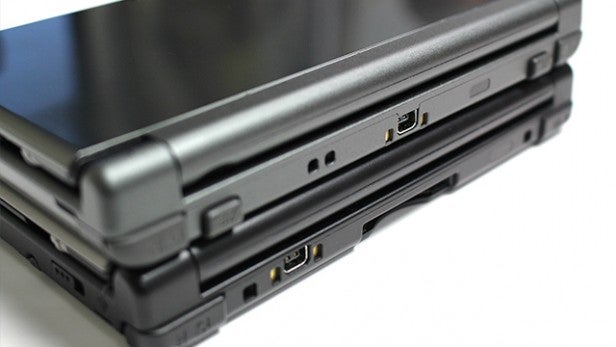
New Nintendo 3DS XL vs 3DS XL – Button Layout and Stylus
While the Circle Pad, D-Pad, Face buttons and shoulder buttons have remained consistent throughout each revision of the 3DS hardware, Nintendo has moved things around a bit on the New Nintendo 3DS XL. The Start and Select buttons are no longer located next to the Home button, but have been repositioned below the face buttons. You’ll also find two additional shoulder buttons on the top edge of the system.
The power button has also been moved, and is now found on the bottom edge of the device – alongside the game cart slot. This does make it slightly awkward to press, but by moving it away from the face button cluster, Nintendo has at least avoided the issue of accidental presses during heated gameplay.
The stylus dock has also been uprooted and placed on the bottom edge, which will most likely infuriate those who have become accustomed to grabbing it from the side, as is the case on the standard XL. The stylus is also rather chubby on the New Nintendo 3DS model, and while it’s comfortable to hold and use, we’re not entirely sure it’s an improvement over the one which shipped with the previous XL edition.
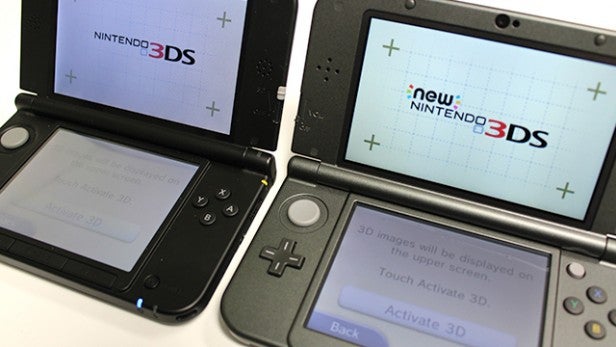
New Nintendo 3DS XL vs 3DS XL – 3D and Screens
Admit it – no matter how much you love the 3DS, the 3D effect was always one of its weak points. If you held the console perfectly still and didn’t move (or even breathe) then the auto-stereoscopic effect was darn impressive – but even the slightest shift in posture would usually break the impression of 3D. This was usually enough for most gamers to switch the 3D off altogether, and when Nintendo launched the 2DS, it seemed to be an admission that the 3D fad was well and truly over.
The New Nintendo 3DS thankfully restores our faith in glasses-free 3D. It uses the front-facing camera to track your head and adjusts the 3D screen to compensate for your movements. In short, it’s a near faultless solution to a tricky problem – even quite aggressive movements fail to break the effect. As a result, we’ve been playing the New Nintendo 3DS XL will the 3D slider dialled all the way up, and it has renewed our appreciation for the tech.
See also: Best Games 2015
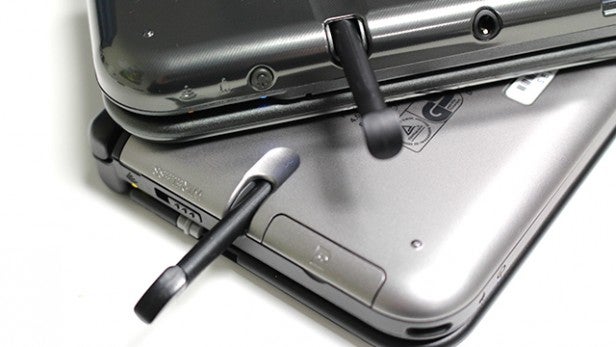
New Nintendo 3DS XL vs 3DS XL – Processor and NFC
The external changes present in the New Nintendo 3DS XL are fairly obvious, but there are elements under the hood which have been updated as well. The console now boasts a superior CPU which will – in time – result in exclusive New 3DS games that can only be used on this latest model, and will come with graphical improvements. The CPU also speeds up general menu navigation, boot speed and download speed.
Also contained with the New Nintendo 3DS XL is NFC tech, which allows the console to communicate with Nintendo’s range of interactive toys, known as amiibo. At launch the system will boast connectivity with Super Smash Bros. for Nintendo 3DS and Ace Combat: Assault Horizon Legacy Plus, but you can expect a lot more titles to feature Nintendo amiibo support in 2015.
See also: PS4 vs Xbox One
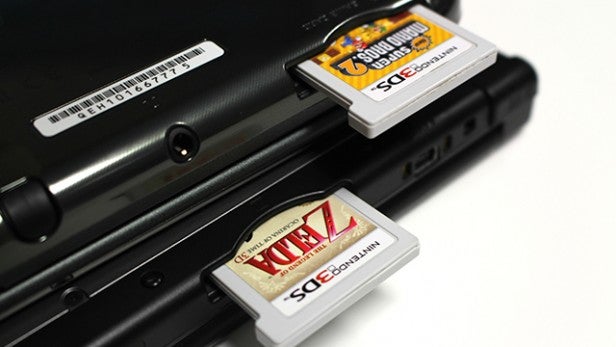
New Nintendo 3DS XL vs 3DS XL – Games
At the time of writing there are no games which are entirely exclusive to the New Nintendo 3DS XL, but that will change over time. Xenoblade Chronicles 3D launches later this year and will only be playable on the latest variant of the console.
However, even at this early stage there are benefits to running older 3DS games on the New Nintendo 3DS XL. Titles like Super Smash Bros. for Nintendo 3DS and Monster Hunter 4 Ultimate run better on the new system – for example, these two games consume so much processing power that on the older hardware, they disable elements like Miiverse and browser access, and effectively “reboot” the console when you exit out of them to the Home menu. That isn’t the case on the New Nintendo 3DS XL, and load times for both of these games are drastically reduced on the newer system.
Buy Now: New Nintendo 3DS XL at Amazon.com from $199
Verdict
While making the choice between the standard New Nintendo 3DS model and its XL variant might be a little more tricky thanks to those collectable cover plates, there really is no comparison between the old XL and the New XL. It’s a vast improvement in every single way, from the more appealing case design to the enhanced 3D effect, additional controls and beefier CPU. The only negatives are the repositioned elements – such as the game card slot and power button – but even these are easy to ignore when you realise just how much better this version is.

